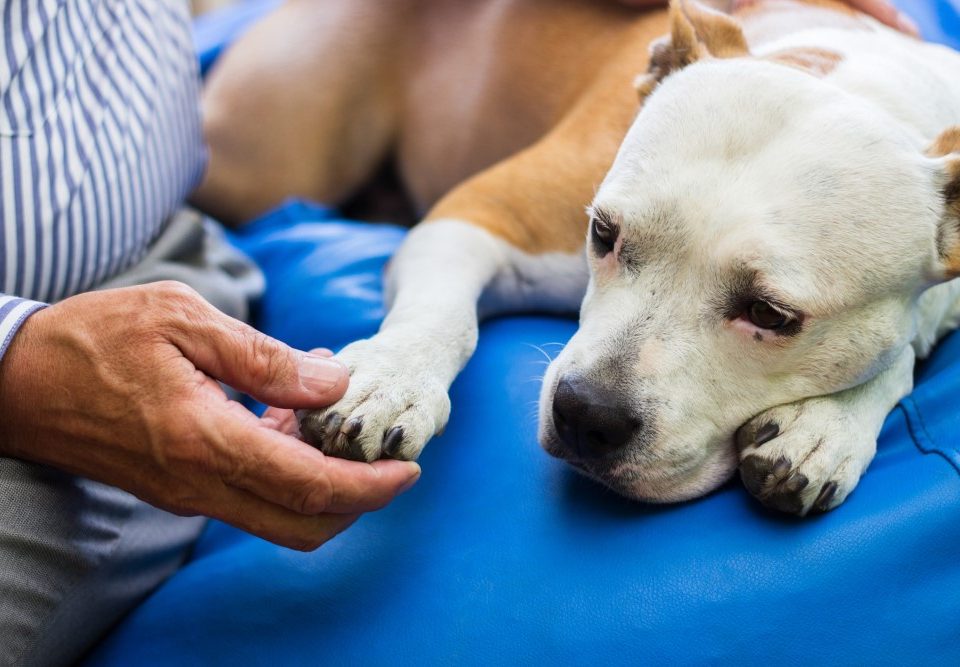
What Happens When A Dog Is Put To Sleep?
November 8, 2021
How Can I Help my Child Understand the Loss of Pet?
November 22, 2021
It can often be very difficult to determine if your dog is suffering from extreme discomfort as he’ll hide it from you as much as possible. However there are certain signs and behaviours that are an indication that your dog may be hurting, so how can you tell if your dog is in pain? Read on…
Mobility issues
Look out for limping as this is a sign that the leg hurts when he puts weight on it, and you may notice him walking around less. If he’s having a problem getting up or down, or shows a reluctance to walk upstairs for example this is another indicator. Changes in posture can also be an evidence of pain.
Excessive grooming
If your dog starts to lick an area he hasn’t focused on before it could be a sign that this is the source of the pain, and he hopes that cleaning and caring for the envisaged wound will help. Eye pain is indicated by the licking of paws followed by the rubbing of the eyes.
Behavioural changes
If your normally friendly dog starts to growl, pin back ears, and even biting you know there is something bothering him. Your dog is simply going into protection mode and is scared that you’re going to hurt him. Other dogs may be all over you, constantly seeking affection. Changes in sleep, restlessness, vocalisation, and toileting habits are all behaviours associated with pain.
Lack of appetite
Your dog won’t feel like eating if he’s in pain and this could be quite a dangerous symptom. If your dog is suffering from mouth pain he may drop the food whilst he’s eating.
Altered breathing
If your dog is panting consistently, especially in cool weather this could be pain-related, or stress-induced caused by any pain your dog is experiencing. Fast or shallow breaths can be signs that breathing hurts.
Causes of pain
Acute pain can cause your dog’s heart to beat faster, a raise in blood pressure, and breathing to speed up. Once you notice any abnormality in temperament it’s a warning sign that something isn’t right. The first step you need to take is to see your vet. There are many reasons your dog may be in pain and these may be diagnosed as:
Injuries from accidents
Degenerative diseases
Arthritis
Dental problems
Infections
Parasites
Dog pain relief
After consulting with your vet your dog will be prescribed the appropriate cause of treatment. This could be a course of anti-inflammatories, flea and worming treatments, or even surgery. Natural dog pain relief can have successful responses when used alongside conventional treatments, and your vet may advise complementary treatments for the control of pain including acupuncture, massage, and chiropractic methods.
Laser therapy can help speed up the healing time of stitches and incisions after surgery, and help with arthritis and reduce pain from nerve damage. Hydrotherapy can be very effective in promoting muscle recovery after injury or surgery and helps reduce inflammation caused by arthritis.
Keep your dog fit and healthy
You can prevent everyday pain by regular activities and exercise which keep joints and limbs flexible, and weight at a healthy level. Exercise at a steady and regular rate is the way to go! Spotting ant dental issues early makes them easier to treat, and reduces the risk of abscesses and dental decay. If in any doubt about your dog’s health just get in touch with your vet at the earliest opportunity.





